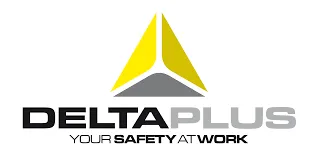The chemical suit represents an advanced solution in personal protective equipment (PPE), meticulously engineered to safeguard individuals from hazardous substances. Crafted from specialized materials such as impermeable fabrics or laminates, these suits create an effective barrier against chemical splashes, vapors, and particulates. The design typically incorporates sealed seams, integrated hood, and self-contained breathing apparatus compatibility, ensuring comprehensive protection.
Chemical suits adhere to stringent industry standards, with certifications such as EN 943 and ASTM F1001, validating their efficacy. The ergonomic design prioritizes wearer comfort and freedom of movement, allowing professionals to perform tasks in challenging environments. These suits find applications in diverse industries, including chemical, pharmaceutical, and emergency response, where exposure to hazardous materials is a constant risk. In essence, chemical suits embody a critical component of occupational safety protocols, exemplifying a commitment to the well-being of individuals working in high-risk environments.
Impermeable Materials: Crafted from specialized impermeable fabrics or laminates that create an effective barrier against chemical splashes, liquids, vapors, and particulates.
Sealed Seams: Equipped with sealed seams to prevent any potential penetration points and ensure a fully enclosed protective barrier.
Integrated Hood: Features an integrated hood for head protection, sealing off potential entry points for chemicals.
Self-Contained Breathing Apparatus (SCBA) Compatibility: Designed to accommodate SCBA equipment, allowing wearers to breathe in environments where the air may be compromised.
Certifications: Adheres to industry standards such as EN 943 and ASTM F1001, providing validation of its effectiveness and reliability.
Ergonomic Design: Prioritizes wearer comfort and freedom of movement, enabling individuals to perform tasks efficiently in challenging environments.
Versatility: Suitable for various industries, including chemical manufacturing, pharmaceuticals, emergency response, and other settings where exposure to hazardous materials is a constant risk.
Easy Donning and Doffing: Engineered for ease of use, allowing for quick and efficient wearing and removal, crucial in emergency situations.
Inspection Before Use: Before each use, visually inspect the chemical suit for any signs of damage, wear, or deterioration. Check for punctures, tears, or defects that may compromise its integrity.
Cleaning After Use: Clean the chemical suit promptly after each use. Follow the manufacturer’s guidelines for cleaning, using appropriate cleaning agents and methods to remove any contaminants.
Proper Storage: Store the chemical suit in a cool, dry place away from direct sunlight and heat. Avoid exposure to harsh chemicals, moisture, or sharp objects that could damage the material.
Avoid Folding Seals: When storing, avoid folding the suit at the sealed seams, as this can cause stress on the material and compromise its effectiveness.
Replace Damaged Suits: If a chemical suit is damaged, worn, or compromised in any way, it should be replaced immediately. Do not attempt to repair a damaged suit, as this may affect its protective capabilities.
Follow Manufacturer Guidelines: Adhere to the specific care and maintenance instructions provided by the manufacturer. Different chemical suits may have unique requirements based on the materials used in their construction.
Regular Inspections: Conduct regular inspections even when not in use. Ensure that zippers, seams, and closures are functioning correctly, and address any issues promptly.
Proper Disposal: If a chemical suit is beyond repair or has reached the end of its service life, follow proper disposal procedures according to local regulations for hazardous materials.
REQUEST QUOTE















